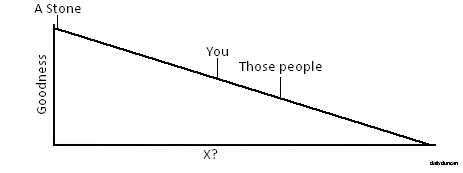Since the dawn of history we have immortalized the exceptional in art and song. Statues, murals and architecture were more commonly employed in the classical period, while today we use music and facebook pages to commemorate movements and saints. One method which has been used throughout history to honor significant people and events is the holiday. Just look at your calendar and you’ll see days dedicated to wars and kings, countries and queens. Unfortunately, the past decade has seen an alarming growth in the number of marked days.
It all started with the dawn of the special interest group, when a few well-meaning citizens sat down together and decided that their cause was the best one. They discussed how they could create a public symbol for their cause, but statues, paintings and songs weren’t far-reaching and accessible. They wanted to reach the entire world with this symbol, but they didn’t want to actually make something, so they decided to borrow a day from the calendar and call it their own.
This wasn’t a big deal; after all, they only took one day and there was plenty remaining. But other groups caught on, realizing that they could compel others to recognize their movement by creating special interest days. Soon, special interest groups were gobbling up days in a frenzy, until one group had a brilliant and terrible idea: the special interest week.
Today, we have dozens of days, several weeks and even a few months dedicated to special causes, and more are being generated all the time. Just listen to the radio for a few minutes and you’ll hear a promotion for National Wildlife Week or Bike to Work Day. Unfortunately for these groups, they fail to realize what made holidays special in the first place, their scarcity. A calendar with 365 holidays actually has 0 holidays; none of the days are special because all of them are special.
One day we could be observing No Power Hour on Bike to Work Day during National Wildlife Week in Breast Cancer Awareness Month. There’s no question that this needs to stop, but what can we do about it?
August 30th is now Calendar Preservation Day. In order to promote awareness about the dwindling number of unmarked days on our calendar, we will all join together, with one voice, on August 30th and say, “We will no longer recognize special causes on certain days!”
